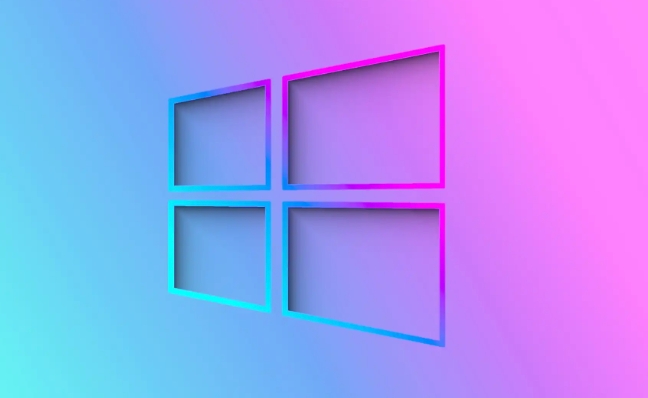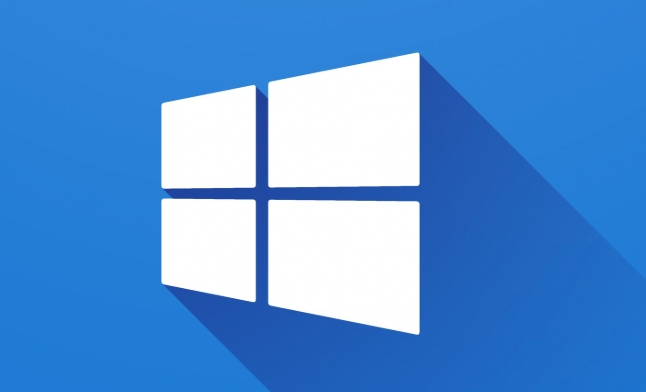Windows can't access shared folder on network
When encountering the "Windows can't access shared folder on network", you can usually solve the following steps: 1. Turn on the network discovery and file sharing function and turn off password protection; 2. Make sure that the target computer is enabled to share and set the correct permissions; 3. Check the firewall rules and service status to ensure that it allows shared access; 4. Use the credential manager to add network credentials for long-term stable connection.

The problem of "Windows can't access shared folder on network" is usually caused by abnormal network settings, permission configuration, or service status. Don't worry, this situation is actually quite common, and most of the time it can be solved with a few small adjustments.

Below are some common reasons and corresponding troubleshooting methods to help you solve this problem step by step.

1. Check whether network discovery and file sharing are enabled
Windows may turn off network discovery and file sharing by default, which will prevent you from accessing shared folders on your LAN.
Operation steps:

- Open Control Panel → Network and Internet → Network and Sharing Center
- Click "Change Advanced Sharing Settings" on the left
- Under the currently used network configuration file (usually "dedicated" or "public"):
- Enable Network Discovery
- Enable File and Printer Sharing
- Turn off "Password Protection Sharing" (if the other device does not set a user password)
Note: If you are connected to a company or public network, the system may use the "public" configuration file by default. Remember to check the settings in that section.
2. Make sure the target computer allows remote access
The computer you want to access also needs to be configured correctly, otherwise it will not be able to connect even if the unit is set up without any problem.
The following points need to be confirmed:
- The target computer has enabled file sharing and has set a shared folder
- The permissions to share folders include your username or Everyone user group
- If password protection sharing is enabled, make sure you know a valid username and password for the target computer
Tips: Try to run
ipconfigon the target computer to view the IP address, and then access it from the machine using the\\IP地址, such as\\192.168.1.100, which can bypass the problem of host name resolution.
3. Check whether the firewall and service block access
Sometimes firewall rules or some system services are not started, it can also cause shared folders to be inaccessible.
Recommended operations:
- Confirm that the firewall rules related to "File and Printer Sharing" are enabled
- Check if the following services are running:
- Function Discovery Resource Publication
- SSDP Discovery
- UPnP Device Host
- Computer Browser
- Server (this is especially important)
You can press Win R, enter services.msc to enter, find these services and set to "automatic" startup type, and start them manually if necessary.
4. Use Credential Manager to add network credentials (suitable for long-term use)
If you frequently access a shared directory and it enables password protection, you can avoid entering your account password every time by adding network credentials.
The steps are as follows:
- Open Control Panel → User Account → Credential Manager
- Click "Add Windows Credentials"
- Fill in the network address
\\目标IP地址or target computer name - Enter the valid username and password of the target computer to save it
This way, the next time you access the shared folder, there will be no error prompt popup.
Basically these common treatments. Some settings seem simple but are easy to ignore, especially the default policies vary slightly between different Windows versions, such as the Home and Professional versions, which are somewhat different in network sharing. Don’t panic when encountering problems. Follow these steps to check them one by one, and most of the situations can be solved.
The above is the detailed content of Windows can't access shared folder on network. For more information, please follow other related articles on the PHP Chinese website!

Hot AI Tools

Undress AI Tool
Undress images for free

Undresser.AI Undress
AI-powered app for creating realistic nude photos

AI Clothes Remover
Online AI tool for removing clothes from photos.

Clothoff.io
AI clothes remover

Video Face Swap
Swap faces in any video effortlessly with our completely free AI face swap tool!

Hot Article

Hot Tools

Notepad++7.3.1
Easy-to-use and free code editor

SublimeText3 Chinese version
Chinese version, very easy to use

Zend Studio 13.0.1
Powerful PHP integrated development environment

Dreamweaver CS6
Visual web development tools

SublimeText3 Mac version
God-level code editing software (SublimeText3)

Hot Topics
 1793
1793
 16
16
 1736
1736
 56
56
 1587
1587
 29
29
 267
267
 587
587
 the default gateway is not available Windows
Jul 08, 2025 am 02:21 AM
the default gateway is not available Windows
Jul 08, 2025 am 02:21 AM
When you encounter the "DefaultGatewayisNotAvailable" prompt, it means that the computer cannot connect to the router or does not obtain the network address correctly. 1. First, restart the router and computer, wait for the router to fully start before trying to connect; 2. Check whether the IP address is set to automatically obtain, enter the network attribute to ensure that "Automatically obtain IP address" and "Automatically obtain DNS server address" are selected; 3. Run ipconfig/release and ipconfig/renew through the command prompt to release and re-acquire the IP address, and execute the netsh command to reset the network components if necessary; 4. Check the wireless network card driver, update or reinstall the driver to ensure that it works normally.
 How to fix 'SYSTEM_SERVICE_EXCEPTION' stop code in Windows
Jul 09, 2025 am 02:56 AM
How to fix 'SYSTEM_SERVICE_EXCEPTION' stop code in Windows
Jul 09, 2025 am 02:56 AM
When encountering the "SYSTEM_SERVICE_EXCEPTION" blue screen error, you do not need to reinstall the system or replace the hardware immediately. You can follow the following steps to check: 1. Update or roll back hardware drivers such as graphics cards, especially recently updated drivers; 2. Uninstall third-party antivirus software or system tools, and use WindowsDefender or well-known brand products to replace them; 3. Run sfc/scannow and DISM commands as administrator to repair system files; 4. Check memory problems, restore the default frequency and re-plug and unplug the memory stick, and use Windows memory diagnostic tools to detect. In most cases, the driver and software problems can be solved first.
 My second monitor is not detected on Windows
Jul 08, 2025 am 02:47 AM
My second monitor is not detected on Windows
Jul 08, 2025 am 02:47 AM
If the second monitor is not recognized by Windows, first check whether the cable and interface are normal, try to replace the HDMI, DP or VGA cable, confirm the plug-in video output port, and test different interfaces to eliminate compatibility issues; then verify the monitor power and input source settings, and connect the monitor separately to test whether it can be recognized; then enter the Windows display settings and click the "Detection" button, or use Win P to switch the display mode, and update the graphics card driver at the same time; finally check the graphics card specifications to confirm whether it supports multi-screen output to avoid exceeding its maximum output capability.
 Windows could not start because the following file is missing or corrupt
Jul 07, 2025 am 02:39 AM
Windows could not start because the following file is missing or corrupt
Jul 07, 2025 am 02:39 AM
When the boot prompt is "Windows could not start because of the following fileismissing" 1. You can run bootrec/fixmb, bootrec/fixboot, bootrec/rebuildbcd through the Windows installation media; 2. Check the hard disk connection or use CrystalDiskInfo to detect the health status of the hard disk; 3. If there is a dual system, you can use the bootrec command to rebuild the boot or manually add the boot items; 4. Use PE environment to kill viruses and combine DISM and SFC tools to repair the system files, and the system can be restored in most cases.
 How to Install PHP on Windows
Jul 15, 2025 am 02:46 AM
How to Install PHP on Windows
Jul 15, 2025 am 02:46 AM
The key steps to install PHP on Windows include: 1. Download the appropriate PHP version and decompress it. It is recommended to use ThreadSafe version with Apache or NonThreadSafe version with Nginx; 2. Configure the php.ini file and rename php.ini-development or php.ini-production to php.ini; 3. Add the PHP path to the system environment variable Path for command line use; 4. Test whether PHP is installed successfully, execute php-v through the command line and run the built-in server to test the parsing capabilities; 5. If you use Apache, you need to configure P in httpd.conf
 How to fix second monitor not detected in Windows?
Jul 12, 2025 am 02:27 AM
How to fix second monitor not detected in Windows?
Jul 12, 2025 am 02:27 AM
When Windows cannot detect a second monitor, first check whether the physical connection is normal, including power supply, cable plug-in and interface compatibility, and try to replace the cable or adapter; secondly, update or reinstall the graphics card driver through the Device Manager, and roll back the driver version if necessary; then manually click "Detection" in the display settings to identify the monitor to confirm whether it is correctly identified by the system; finally check whether the monitor input source is switched to the corresponding interface, and confirm whether the graphics card output port connected to the cable is correct. Following the above steps to check in turn, most dual-screen recognition problems can usually be solved.
 Ouyi computer version client installation official website PC okx software download method
Jul 09, 2025 pm 06:00 PM
Ouyi computer version client installation official website PC okx software download method
Jul 09, 2025 pm 06:00 PM
This article provides the download and installation steps of Ouyi computer version client. 1. Visit the official website; 2. Find the download portal; 3. Select the corresponding version; 4. Download and install; 5. Log in to use to ensure that users can quickly complete transaction operations on the PC side.
 How to fix error code 0x80070035 the network path was not found on Windows
Jul 08, 2025 am 02:29 AM
How to fix error code 0x80070035 the network path was not found on Windows
Jul 08, 2025 am 02:29 AM
Error code 0x80070035 is usually caused by network configuration or sharing settings issues. It can be solved through the following steps: 1. Ensure that the two computers are connected to the same network and belong to the same work group; 2. Enable file and printer sharing and network discovery, and turn off password protection sharing; 3. Check SMB version compatibility and enable SMBv1 if necessary; 4. Use IP addresses to test host name resolution and connectivity; 5. Adjust advanced settings such as starting Server services, disabling third-party firewalls, or enabling unsafe guest login. These operations can troubleshoot and fix common problems one by one.





